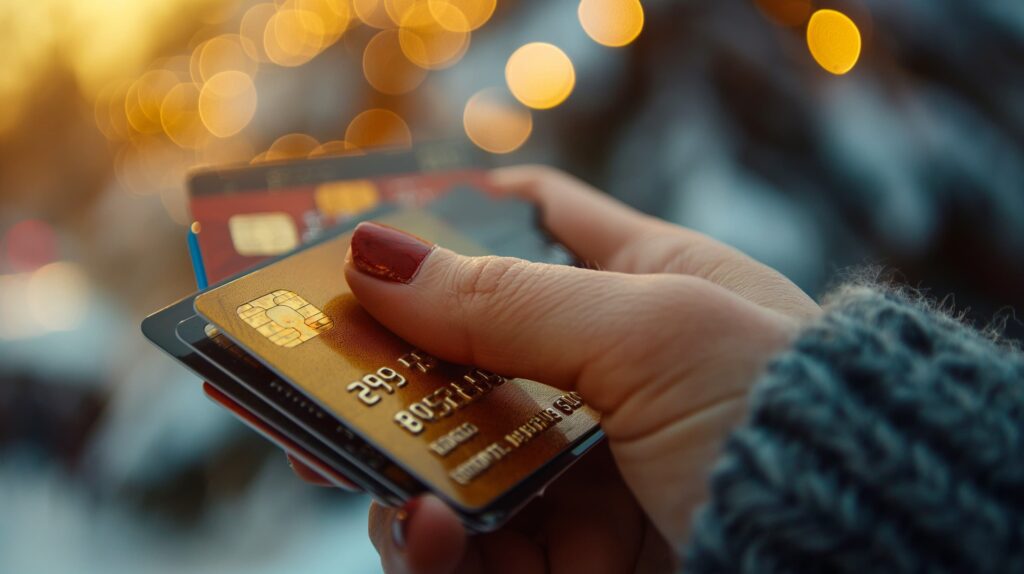Few things feel as rewarding as finally getting a handle on your spending. Maybe you’ve opened your phone and scrolled through a pile of expenses, only to sigh at how quickly small purchases multiply. After experiencing that, the buzz around budgeting apps makes sense—they show exactly where your money is going and reveal patterns you might miss.
Managing your finances without clear structure can feel a bit like playing a game with half the rules missing. That’s why so many people are exploring digital solutions designed to make budgeting more transparent and actionable. Budgeting apps help users track spending and stick to spending plans, all from their devices.
As you look for ways to take control, this guide introduces the best budgeting apps available now. Each section offers strategies, examples, and feature comparisons, all so you can pick the right tool for your style and goals. Ready to get started?
Zeroing In on Your Money: Matching App Features to Real-Life Habits
When you’re picking budgeting apps, the most useful first step is pinning down your real habits. Try thinking about the way you describe your spending at the end of a month—are you searching for surprises, or do you want confirmation you stayed on track?
The ideal budgeting apps don’t just track numbers—they give feedback tailored to your actual questions. Say, for instance, you glance at your coffee budget each Friday; the right app shows where you stand, instantly. This section unpacks that alignment.
Connection: Syncing Accounts Efficiently for True Spend Tracking
You open your app and link your main checking and savings accounts. The connection is fast and secure, and all new transactions flow in automatically. This process replaces handwritten lists and reduces the risk of missing any purchases at the close of each week.
There’s almost no wait time. Compare that to manually typing every amount, and you’ll save hours each month. If an account won’t sync, support chat helps resolve the issue—restoring that sense of visibility over all spending.
Next time you sit down for your monthly review, you’ll see every transaction at a glance. If you don’t remember a charge, you can tap for more details—deeper insight without digging through statements by hand.
Customization: Categorizing for Clarity With One-Tap Rules
Your app lets you rename or recategorize spending instantly. A charge from a local market gets tagged as “groceries” instead of “shopping,” just by tapping once. This level of customization saves headaches at tax time or when reviewing trends.
Some budgeting apps let you build detailed subcategories, too. That means you could track pet food apart from all groceries or view holiday gifts versus everyday shopping. The clearer your categories, the easier it gets to spot habits you want to change.
Customize weekly alerts. Want a warning when you hit $50 on takeout for the month? A quick toggle sets that up, and the notification nudges you, keeping spending anchored to your real priorities.
| App Name | Account Syncs | Custom Categories | Takeaway: Who Should Try It |
|---|---|---|---|
| PocketTrack | Yes, multiple banks | Yes, unlimited | Ideal for detail-oriented users wanting granular control |
| BudgetFlow | Instant, all major institutions | Yes, up to 25 | Great if you need simple setups that work out of the box |
| SpendWise | Partial, manual updates allowed | No, preset only | Good for those uneasy about linking banks digitally |
| MoneyPath | Yes, plus investment accounts | Yes, unlimited | For tracking net worth along with expenses |
| EveryDollarPro | No, manual only | Yes, up to 15 | Great for learning by entering each expense yourself |
Organize Your Daily Spending: Using Techniques that Stick
Tools matter, but lasting budgeting success comes from new behaviors. Apps nudge you, but you also need real-world methods to enforce your choices. Start by setting clear goals for why you want to budget differently, then test out new habits with the app to reinforce them.
Tracking daily wins and mistakes lets you spot patterns before they become problems. The widgets in budgeting apps work as reminders. Use them to keep your plans front and center, like an accountability partner in your pocket.
Setting and Adjusting Budget Targets on the Go
It’s Tuesday night, and you’re reviewing your spending on snacks. You realize your weekly budget is almost spent two days early. In your app, you lower next week’s snack allowance by five dollars and set a pop-up reminder for Fridays.
The next week, you catch yourself at the store. Remembering last Tuesday’s frustration, you pause and check your available balance. That small stop—powered by data—prevents overspending. Over months, those micro-adjustments reshape your spending routines effectively.
- Set a daily limit for categories where you tend to overspend. This gives immediate feedback and easy course correction before habits drift.
- Activate category-specific alerts so you know exactly when you’re reaching your limit, keeping spending intentional with less second-guessing.
- Review previous month spending every weekend, looking for outliers. Use facial expressions—a frown signals review; a smile means you’re on track.
- Freeze a single unnecessary category for one month. See where those funds could be redirected and track the experiment’s outcome with your app.
- Share your budgeting wins with a friend. Having another person hear your updates builds motivation to stick to targets and celebrate progress.
The act of checking your progress each night may sound small, but it cements the habit for lasting results. Use the feedback from your app as you would a trusted journal—making each data point actionable.
Building Consistency with Weekly Reviews and Rule Tweaks
Every Sunday evening, pull up your monthly report in the budgeting app. Look for one category that showed unexpected growth—maybe “entertainment,” maybe “coffee shops.”
Decide on a new guideline for the week ahead. For instance: “I’ll limit coffee runs to three times.” Jot that specific line in your notes section so you remember the plan at checkout next time.
- Use spending trends to identify where impulsive buys crop up, then brainstorm one alternative action you’ll try in similar moments.
- Schedule five minutes for check-ins—even better, create an app notification to pair with a weekly habit, like Sunday laundry or meal prep.
- Adjust your categories each month based on changes in life circumstances, like adding “pet care” after adopting a dog or shrinking “commuting” during vacations.
- Make manual corrections when a charge is miscategorized—never let repeated errors hide real trends. Consistency is key for actionable data.
- Try out a “no-spend” day and monitor your mood. The sense of relief or curiosity you feel can clarify which purchases really matter to your happiness.
Review how your new guidelines align with your results, and tweak as soon as you spot friction. Let your budgeting app handle the data work, while you direct the narrative of your finances.
Syncing Multiple Income Streams: Modern App Solutions for Mixed Earnings
If you’re juggling side gigs or multiple paychecks, budgeting apps aren’t just for expense tracking—they bring all your income streams together for a unified view. This step is crucial for seeing your true average monthly cash flow and preventing surprises from inconsistent earnings.
Budgeting apps help you stack each income source side by side with your regular job, freelance work, or selling crafts online. Here’s the breakdown on syncing and separating every dollar that flows in.
Logging Freelance, Gig, and Full-Time Paychecks
First, add each job’s payout manually or auto-sync supported platforms. An effective app prompts you to name each stream: “marketing gig,” “online tutoring,” “main job.” Distinct labeling keeps clarity between primary and supplemental money.
In a realistic month, you might see steady deposits from your employer and a burst of smaller credits midweek for side work. Your budgeting app automates the math, so budgeting by averages becomes faster. Review these numbers before agreeing to a big new expense.
If your side income varies, set conservative spending limits based on the lowest typical month, not your highest. This keeps plans resilient even when one revenue stream is slow, so you avoid scrambling later.
Group and Allocate: Building a Personalized Income Dashboard
Imagine moving money into virtual envelopes in your budgeting app. Assign each to a real need: fixed bills, savings, or fun money. Color-coding each envelope unlocks instant clarity—one glance, and you know what’s been set aside.
Budgeting apps let you adjust allocation recipes for each income type. For example, you might send all freelance pay straight to travel savings, while salary covers fixed bills and groceries. Record these splits to observe which approach helps you save more reliably.
If you get a windfall, such as a holiday bonus, allocate 20 percent for a treat, but send the rest to a long-term category. This deliberate handling stops impulse splurges and strengthens your positive relationship with irregular income.
Turning Small Changes Into Big Results: Micro-Adjustments With Apps
Real change sticks when it’s manageable. Picture budgeting apps as fitness trackers for your wallet—tiny adjustments build healthy financial habits over time. This section details how micro-moves made through your app can snowball into major improvements by year-end.
Add daily note-taking features and instant adjustments to your tool kit. Both make your budget more adaptive, so fluctuations in spending never catch you unprepared or overwhelmed. You’ll build confidence in every choice.
Reflect and Record: Using Behavior Notes for Laser Focus
Get into the habit of jotting a quick, 10-second note each time you buy outside your usual budget. Did stress spark the purchase? Was it a planned splurge? Record that context in your app’s comments section for later analysis.
These notes offer a reality check on emotional spending. Over several months, you’ll spot emotional cues tied to bigger purchases. Take advantage of your app’s search and filtering: look for repeated triggers, then plan ahead for similar scenarios, like meal prepping before busy weeks.
When you know why a pattern repeats—late work nights, travel, or celebrations—you’re able to prepare with proactive limits or small treats, keeping your overall budget intact and intentional.
Split Transactions and Flexible Transfers for Event-Based Spending
Split a restaurant bill right in your budgeting app: record both your entrée and that shared appetizer, labeling each part for accurate tracking. It’s one of the best ways to keep group outings from distorting your category totals.
For big-ticket events like weddings or vacations, set a temporary budget within the app. Transfer funds into it ahead of time. This ring-fences money, so the rest of your categories stay accurate. Adjust the target as plans change, never losing control.
Develop a routine—before and after each special event, update your splits, notes, and temporary budgets. Check off a completion box or mark an emoji when finished. This creates closure and a feeling of control at every step.
Choosing Your App: Comparing Experience, Security, and Support
Every user wants different things when they look for the best budgeting apps, so let’s lay out the must-haves: user experience, robust security, and rock-solid customer support. These features protect your money and peace of mind equally.
Each app might look similar at first glance, but the differences count. Some prioritize elegant, color-coded dashboards; others focus on best-in-class encryption or live human chat. Make those choices based on your tolerance for complexity and your need for support access.
User Experience: Color, Clarity, and Speed
When evaluating an app, look at the home screen: Are category balances color-coded for quick checks? Can you find what you need without scrolling endlessly? Visual clarity saves time and helps keep you engaged. Track how long it takes you to enter a day’s transactions—if it’s under three minutes, you’re set.
If reminders feel motivating rather than annoying, you’ve chosen well. Samples scripts to try: “Check lunch spending before 3 PM.” Or if clutter distracts you, a clean layout will reduce stress and boost your commitment to reviewing finances.
Listen to how the app responds to mistakes—editing a miscategorized charge should feel forgiving, like working with undo instead of starting over. Frustrating interfaces breed resistance, so test the free version to spot red flags early. Move on if you feel annoyed after week one.
Security and Support: Layered Protection and Reliable Help
User data in responsible budgeting apps is encrypted with high standards, such as TLS 1.2 or multi-factor authentication. This shields you from leaks and maintains privacy across devices. Always check security settings during setup and enable all recommended options.
If you get stuck, direct support channels bridge the gap between confusion and clarity. A good budgeting app offers easy ticket submission and detailed FAQ pages. Try sending a test question—the speed and tone of the reply tells you much about their commitment to your peace of mind.
When something goes wrong, knowing you can reach a human and resolve it quickly takes stress off your financial plate. Bookmark the help page and read a few user reviews before importing personal financial info. Safe, smooth experiences are non-negotiable here.
Advanced Strategies: Budgets for Couples and Families
Budgeting with a partner or family group means different priorities, more shared goals, and a strong need for transparency. Choose budgeting apps that make collaborative tracking easy, letting everyone log purchases, approve changes, and celebrate milestones together.
Shared dashboards help avoid confusion, while approval flows keep peace when splurges tempt one member. This section dives into joint budgeting plans—plus practical scripts and role splits for real-world success.
Sync and Share: Building Trust With Transparent Tracking
Invite your spouse or roommate by sharing a code in the app. Both see updated balances and can log bills instantly. Regularly reviewing together builds trust and strengthens the shared commitment to savings goals. Take turns entering receipts each week so ownership feels fair.
If a category gets overspent, discuss a plan out loud: “Let’s both skip eating out this Saturday and move savings back to groceries.” This regular check-in becomes second nature, like a couple checking their calendars before planning a trip.
Approve each unexpected purchase together before finalizing. This habit prevents blame later and turns every budgeting win into a small team celebration—celebrating the month you both came in under budget feels even better when shared.
Feature Flexibility: Transferring, Splitting, and Custom Access
Each family member can have different spending limits and notification preferences. Young adults might receive alerts for entertainment, parents for utilities. This layered setup mirrors real-world needs and gives each member responsibility linked to their day-to-day habits.
Use custom tags for families: groceries, school supplies, pet care—relevant now and in the future. Then, for big events like holidays, temporarily raise those limits and track collaboratively. The flexibility creates a support system without feeling restrictive.
If preferred, limit admin controls so one trusted person reviews changes before they go live. Think of it as steering the family car on a long road trip—every rider has input, but one person guides overall direction, keeping the journey smooth.
Your Finances, Your Future: Personalize This Year’s Budgeting Journey
Throughout this guide, we explored exactly how budgeting apps give you an edge by aligning daily habits, unique income streams, and shared goals—all while simplifying data entry and follow-through. These tools put personalized feedback at your fingertips, transforming your financial life step by step.
Whether you’re starting from scratch or refining a well-worn routine, now’s the perfect season to test the fit of different apps. Practice customizing notifications, splitting tricky transactions, and inviting loved ones into the process. Every small tweak brings you closer to worry-free money management.
The best budgeting journey is the one you stick with. Approach each day as a fresh chance to review, adjust, and succeed—guided by clear, actionable data. Let every dollar tell a story, and let each new habit propel you to bigger wins this year.


